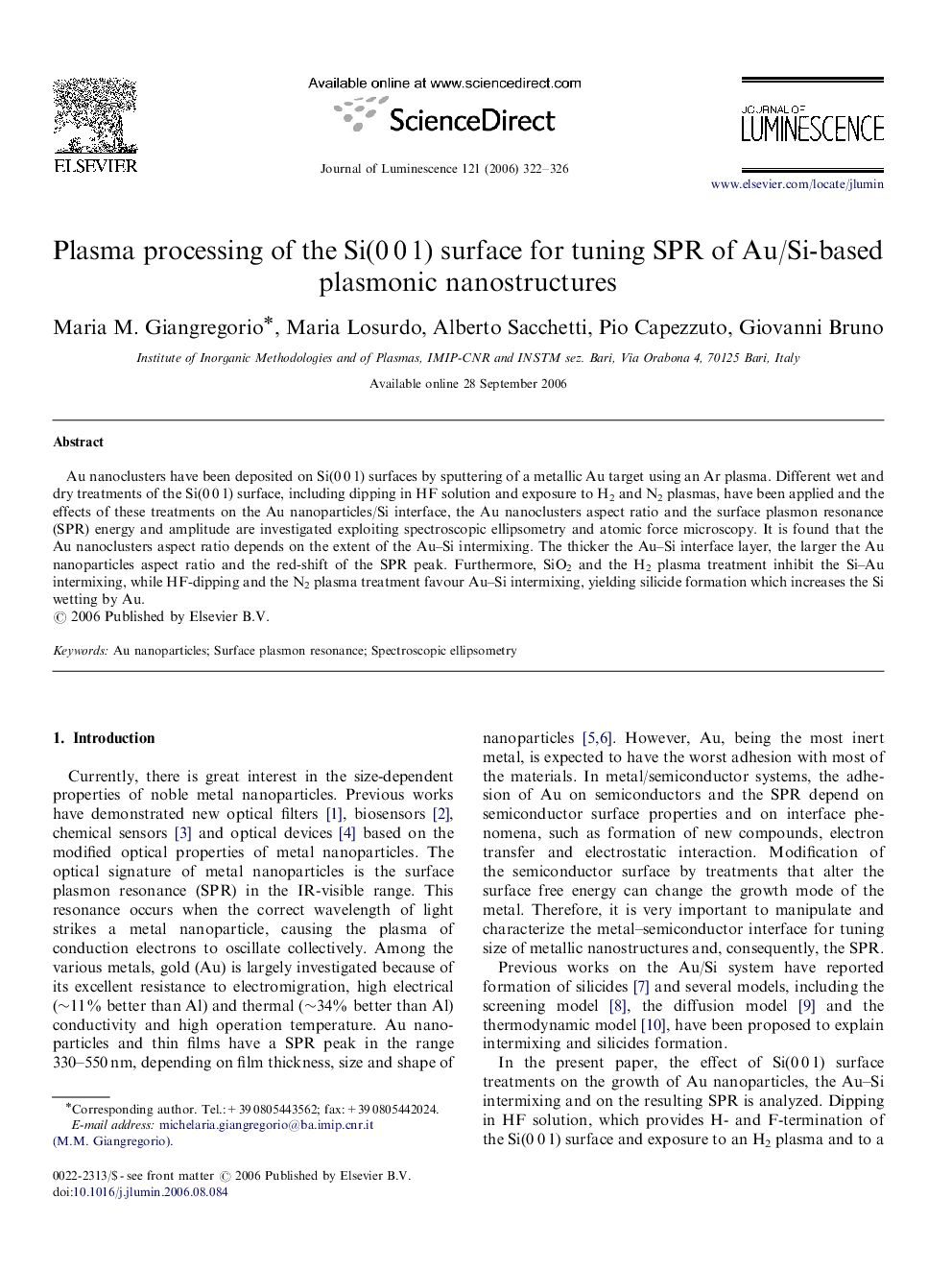| Article ID | Journal | Published Year | Pages | File Type |
|---|---|---|---|---|
| 5404029 | Journal of Luminescence | 2006 | 5 Pages |
Abstract
Au nanoclusters have been deposited on Si(0Â 0Â 1) surfaces by sputtering of a metallic Au target using an Ar plasma. Different wet and dry treatments of the Si(0Â 0Â 1) surface, including dipping in HF solution and exposure to H2 and N2 plasmas, have been applied and the effects of these treatments on the Au nanoparticles/Si interface, the Au nanoclusters aspect ratio and the surface plasmon resonance (SPR) energy and amplitude are investigated exploiting spectroscopic ellipsometry and atomic force microscopy. It is found that the Au nanoclusters aspect ratio depends on the extent of the Au-Si intermixing. The thicker the Au-Si interface layer, the larger the Au nanoparticles aspect ratio and the red-shift of the SPR peak. Furthermore, SiO2 and the H2 plasma treatment inhibit the Si-Au intermixing, while HF-dipping and the N2 plasma treatment favour Au-Si intermixing, yielding silicide formation which increases the Si wetting by Au.
Related Topics
Physical Sciences and Engineering
Chemistry
Physical and Theoretical Chemistry
Authors
Maria M. Giangregorio, Maria Losurdo, Alberto Sacchetti, Pio Capezzuto, Giovanni Bruno,
